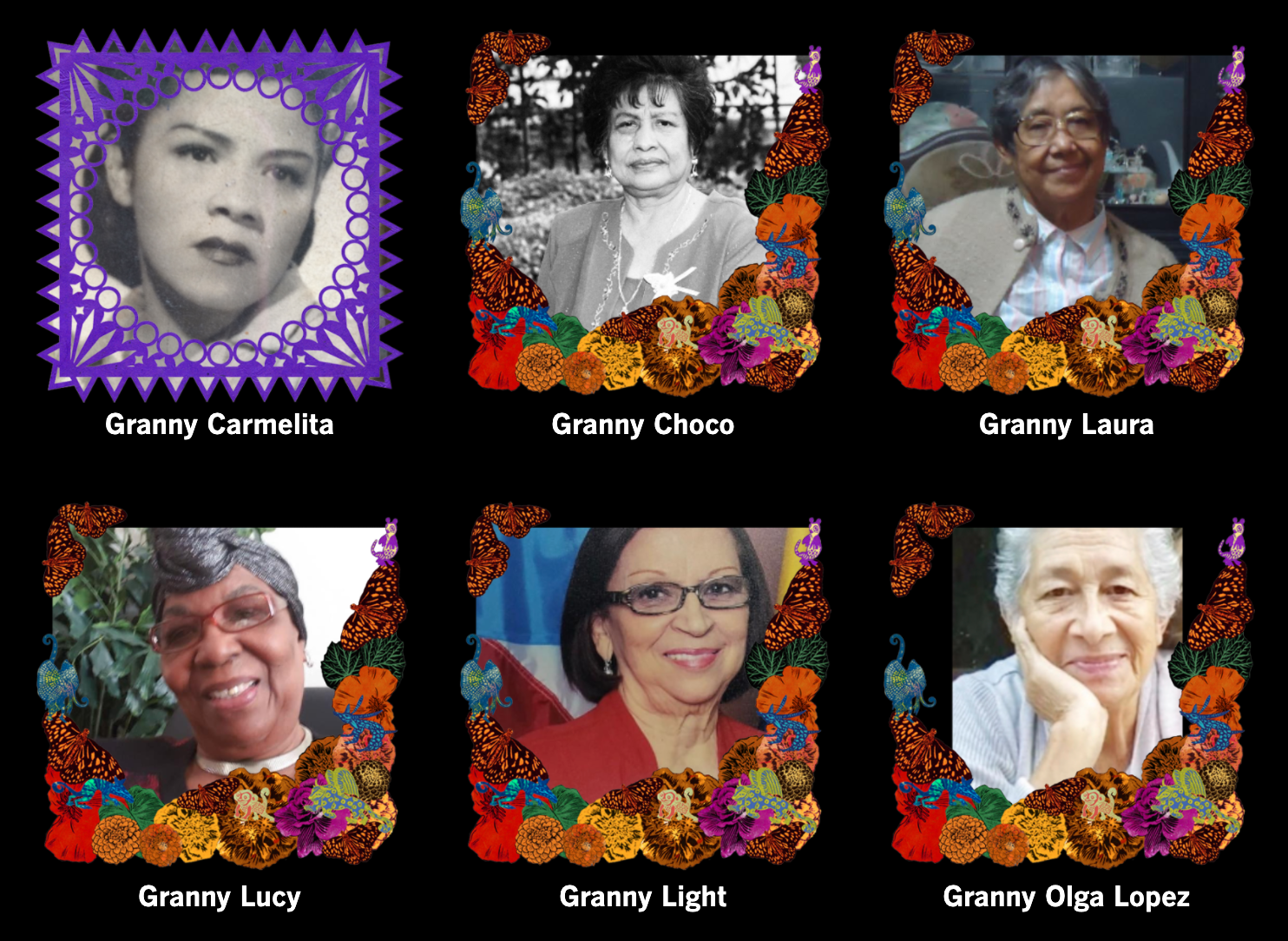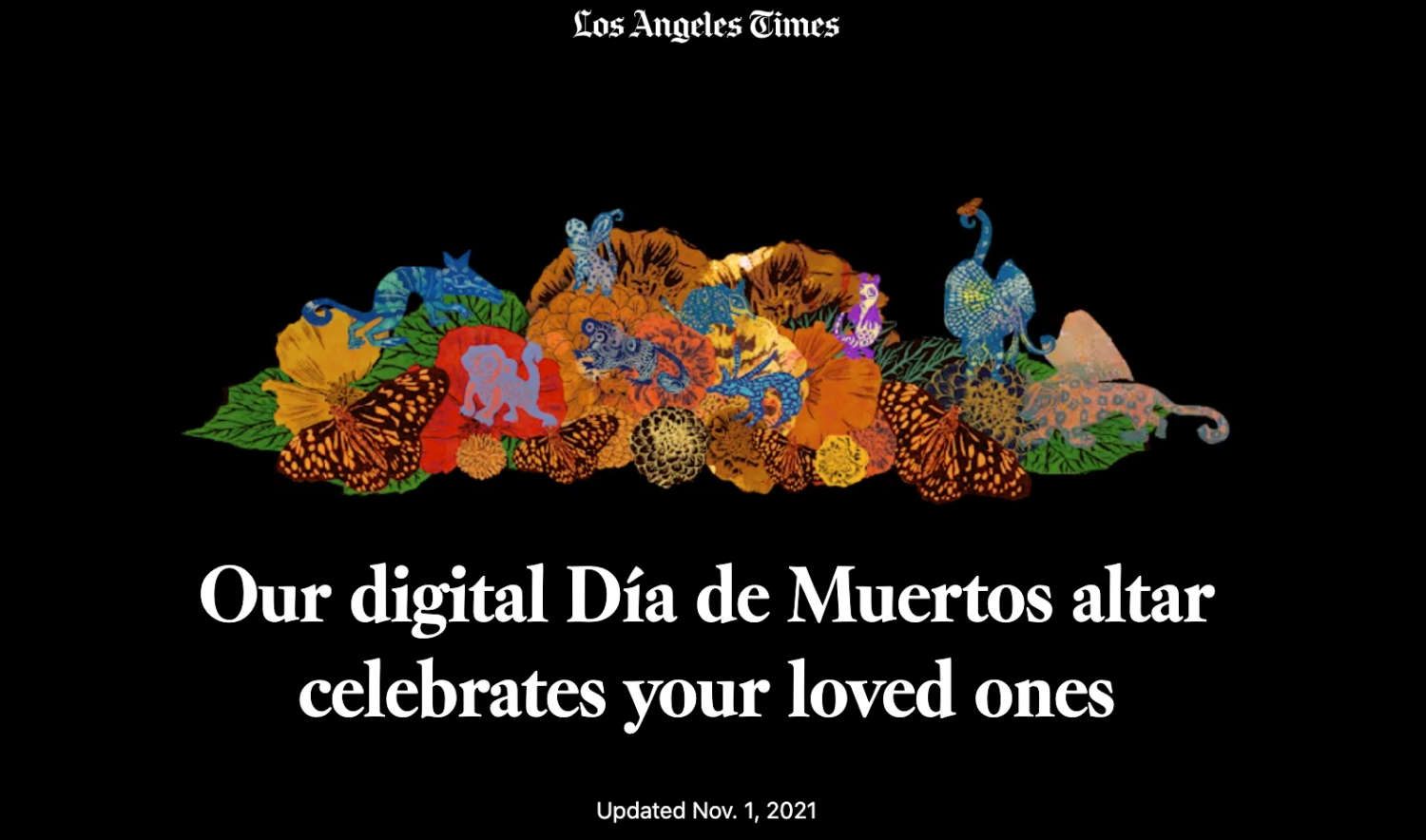In the last year and a half, a lot of our lives have been lived and shared online.
For Día de Muertos, which was this past Monday, a team of journalists at the Los Angeles Times worked to create a digital space for people to remember those they’ve lost.
“The holiday, celebrated in Mexico and parts of Latin America and the United States, is one of remembrance and community,” the project explains. “It’s an opportunity to spend time with the memories of those who came before us. And though death is at the forefront, Día de Muertos is also a celebration of life. The traditional way of celebrating is by making an ofrenda — an offering that often features a photo of the person being remembered, candles, foods and items specific to them, cempasúchiles (marigolds), papel picado and calaveras (sugar skulls).”
Fidel Martinez, an audience engagement editor at the Times, worked with Martina Ibáñez-Baldor, senior art director, and Vanessa Martínez, a data and graphics journalist, on the project.
“We wanted to digitize the feeling that you get while visiting one of these altars,” Martinez said.
The three journalists hoped they’d get 50 submissions. By the end of the day Monday, when the altar closed, they’d received more than 1,000 and had posted more than 900 ofrendas.
One lesson from their work: “You can do cool things for audiences and they’ll respond.”

Screen shot, Los Angeles Times
The idea for the digital altar started in a private Slack channel for Latino staffers at the L.A. Times and grew when journalists from different departments pitched in to make it a reality.
They also knew the communities they were making it for might not want it.
“Because the Los Angeles Times’ history of mischaracterizing, vilifying and misrepresenting Mexican American and Latino communities, I understand why there’s sort of an aversion,” said Martinez, who writes the Latinx Files newsletter. “We basically have to build trust with the Latino community, and this project was an attempt at doing it.”
The team behind the digital altar hoped to build something that people want to be part of. They’re taking extra care with the project and uploading each ofrenda manually, making sure they have permission to use the photo.
The ofrendas offer a bit of space for words, and what’s submitted includes a specificity that shows who a person was, Martinez said.
Here are a few examples:
“I miss riding our bikes around the block and listening to your crazy dreams.”
“She left me with strength. I cook with her old wooden spoons.”
“I wish we could get out of control just one more time, another sip, another dance, another drive-thru.”
Martinez’s mission is “to tell more of our stories,” he said.
The digital altar was an experiment, and it’s one he can offer as an example of what happens when you write for a community instead of just about them.






